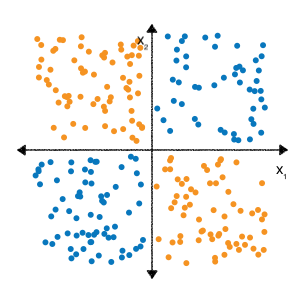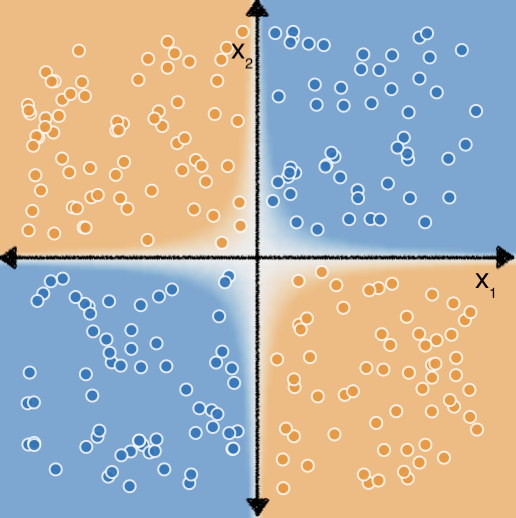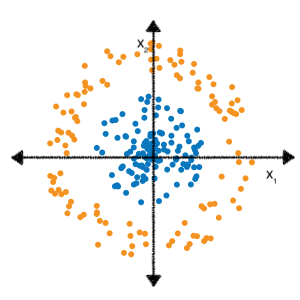Vielleicht erinnern Sie sich aus dem Funktionsübergreifende Übungen im Modul Kategoriale Daten dass das folgende Klassifizierungsproblem nicht linear ist:

„Nicht linear“ bedeutet, dass Sie ein Label mit einem der Form \(b + w_1x_1 + w_2x_2\). Mit anderen Worten: Die „Entscheidungsfläche“ ist keine Linie.
Wenn wir jedoch eine Merkmalskreuzung für die Merkmale x1 und x2 durchführen, können wir die nichtlineare Beziehung zwischen den beiden Merkmalen mit einem linearen Modell darstellen: $b + w_1x_1 + w_2x_2 + w_3x_3$, wobei x3 die Merkmalskreuzung zwischen x1 und x2 ist:

Betrachten Sie nun den folgenden Datensatz:

Vielleicht erinnern Sie sich auch aus den Übungsreihen zu Funktionsverknüpfungen. dass die Bestimmung des richtigen Merkmals sich überschneidet, um ein lineares Modell an diese Daten anzupassen. etwas mehr Aufwand und Experimentierfreude.
Aber was wäre, wenn Sie all diese Tests nicht selbst durchführen müssten? neuronale Netzwerke gehören zu einer Familie von Modellarchitekturen, die darauf ausgelegt sind, nonlinear Muster in Daten. Während des Trainings eines neuronalen Netzes lernt das Modell automatisch die optimalen Feature-Kreuzungen, die auf den Eingabedaten ausgeführt werden müssen, um den Verlust zu minimieren.
In den folgenden Abschnitten sehen wir uns genauer an, wie sie funktionieren.
